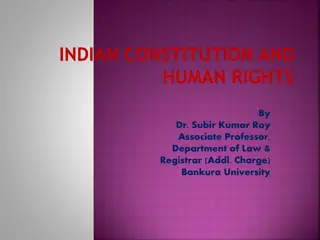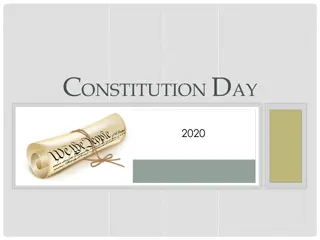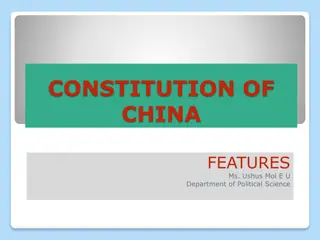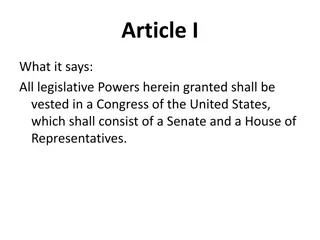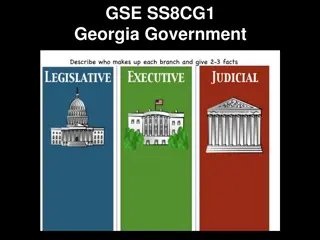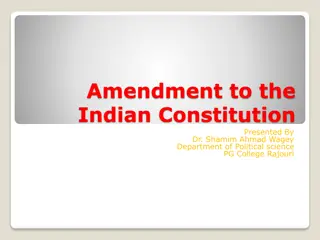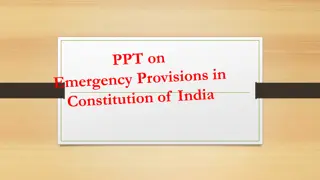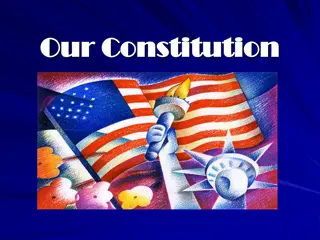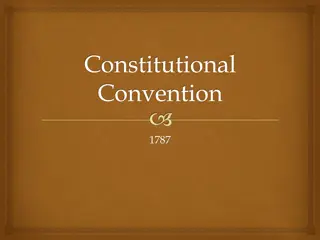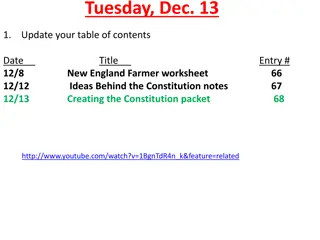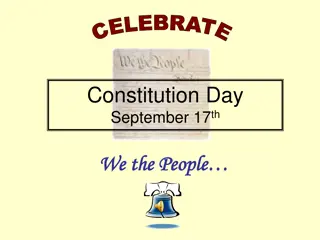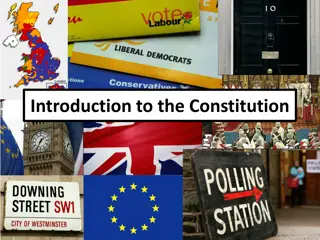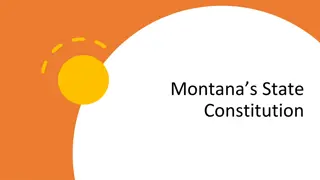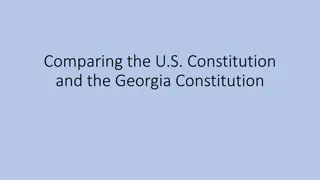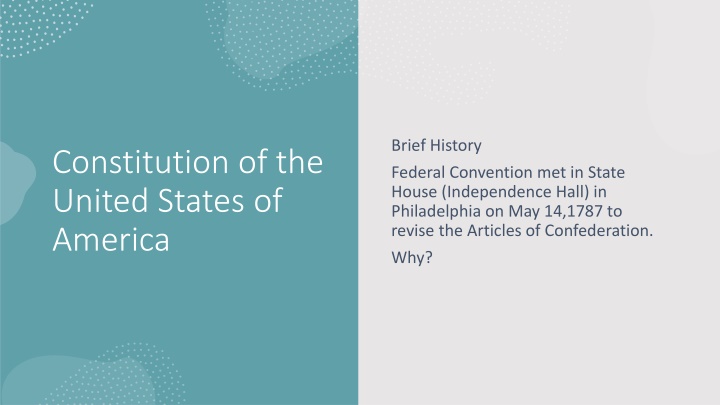
History of the United States Constitution and its Creation Process
Discover the journey of the United States Constitution, from the Federal Convention in 1787 to the complexities of the Articles of Confederation. Understand the significance of forming a Continental Congress, the limitations of the first Constitution, and the transformative Constitutional Convention in Philadelphia.
Download Presentation

Please find below an Image/Link to download the presentation.
The content on the website is provided AS IS for your information and personal use only. It may not be sold, licensed, or shared on other websites without obtaining consent from the author. If you encounter any issues during the download, it is possible that the publisher has removed the file from their server.
You are allowed to download the files provided on this website for personal or commercial use, subject to the condition that they are used lawfully. All files are the property of their respective owners.
The content on the website is provided AS IS for your information and personal use only. It may not be sold, licensed, or shared on other websites without obtaining consent from the author.
E N D
Presentation Transcript
Brief History Constitution of the United States of America Federal Convention met in State House (Independence Hall) in Philadelphia on May 14,1787 to revise the Articles of Confederation. Why?
After the U.S. was independent of British rule, they decided to develop a Confederation for all states to approve and use. How the Constitution Came to Be. In 1777, the states sent delegates to a convention to put together a plan for a unified country. Together, they wrote a document that would establish a central government with a legislative congress to make laws. For four years, the states debated these articles.
What is a Constitution? The constitution is something that sets the limits and boundaries of the governments' interaction and powers. The Constitution works as a means by which the government in the rule knows as to what extent they can impose rules and regulations on the citizen of the country. Let us see how the constitution works.
Who decided to create a Continental Congress? The need for a united policy during the War of Independence led the thirteen states to draft and approve an organic document for a national government. In 1776, the Continental Congress created a committee to draft such a document.
What did the First Constitution Do? America s first constitution, the Articles of Confederation, gave the Confederation Congress the power to make rules and request funds from the states, but it had no enforcement powers, couldn t regulate commerce, or print money. The states disputes over territory, war pensions, taxation,...
The beginnings The Constitutional Convention assembled in Philadelphia in May of 1787. The delegates shuttered the windows of the State House and swore secrecy so they could speak freely. Although they had gathered to revise the Articles of Confederation, by mid-June they had decided to completely redesign the government. There was little agreement about what form it would take.
Some interesting facts about the Constitution One of the fiercest arguments was over congressional representation should it be based on population or divided equally among the states? The framers compromised by giving each state one representative for every 30,000 people in the House of Representatives and two representatives in the Senate.
The rudimentary writing On September 17, 1787, 38 delegates signed the Constitution. George Reed signed for John Dickinson of Delware, who was absent, bringing the total number of signatures to 39. It was an extraordinary achievement. Tasked with revising the existing government, the delegates came up with a completely new one. Wary about centralized power and loyal to their states, they created a powerful central government. Representing wildly different interests and views, they crafted compromises. It stands today as one of the longest-lived and most emulated constitutions in the world.
Ratification The founders set the terms for ratifying the Constitution. They bypassed the state legislatures, reasoning that their members would be reluctant to give up power to a national government. Instead, they called for special ratifying conventions in each state. Ratification by 9 of the 13 states enacted the new government. But at the time, only 6 of 13 states reported a pro-Constitution majority.


